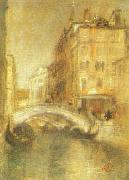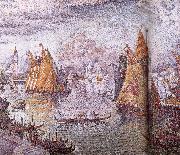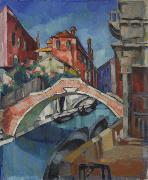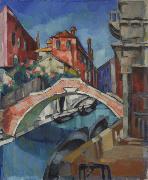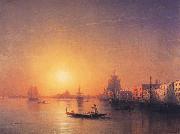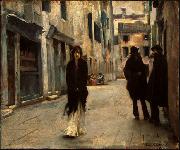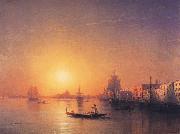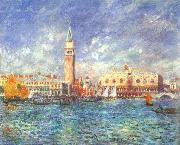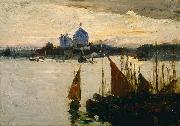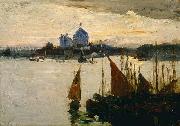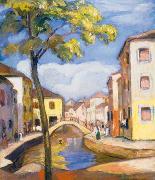Wholesale Oil Painting Reproductions No Minimum and Door to Door! |
|||||||||||
|
|
|||||||||||

|
|||||||||||
|
|
|
||||||||
All James Abbott McNeil Whistler Oil Paintings |
||||||||
|
|
||||||||
|
|
||||||||
|
Artist Introduction: 1834-1903
James Abbott McNeill Whistler Art Locations |
||||||||
|
|
||||||||
|
Venice Painting ID:: 4591 |
|
|||||||
Height Width |
INS/CM Quality |
|||||||
|
X |
| |||||||
|
|
||||||||
All Mikhail Vrubel Oil Paintings |
||||||||
|
|
||||||||
|
|
||||||||
|
Artist Introduction: Russian Symbolist Painter, 1856-1910
Russian painter and draughtsman. He was a pioneer of modernism, and his highly innovative technique broke with the traditions of the Academy of Arts in St Petersburg, where he had been a brilliant student; at the same time he felt dissociated from the social consciousness of The Wanderers. |
||||||||
|
|
||||||||
|
|
Venice Painting ID:: 31202 |
mk72
1893
Decorative panel painted forthe Dunker mansion in Moscow
Oil on canvas
319x134cm
Russian Museum St.Petersburg
|
||||||
Height Width |
INS/CM Quality |
|||||||
|
X |
| |||||||
|
|
||||||||
All Paul Signac Oil Paintings |
||||||||
|
|
||||||||
|
|
||||||||
|
Artist Introduction: 1863-1935
French
Paul Signac Galleries
Paul Victor Jules Signac was born in Paris on November 11, 1863. He followed a course of training in architecture before deciding at the age of 18 to pursue a career as a painter. He sailed around the coasts of Europe, painting the landscapes he encountered. He also painted scenes of cities in France in his later years.
In 1884 he met Claude Monet and Georges Seurat. He was struck by the systematic working methods of Seurat and by his theory of colours and became Seurat's faithful supporter. Under his influence he abandoned the short brushstrokes of impressionism to experiment with scientifically juxtaposed small dots of pure colour, intended to combine and blend not on the canvas but in the viewer's eye, the defining feature of pointillism.
Many of Signac's paintings are of the French coast. He left the capital each summer, to stay in the south of France in the village of Collioure or at St. Tropez, where he bought a house and invited his friends. In March 1889, he visited Vincent van Gogh at Arles. The next year he made a short trip to Italy, seeing Genoa, Florence, and Naples.
The Port of Saint-Tropez, oil on canvas, 1901Signac loved sailing and began to travel in 1892, sailing a small boat to almost all the ports of France, to Holland, and around the Mediterranean as far as Constantinople, basing his boat at St. Tropez, which he "discovered". From his various ports of call, Signac brought back vibrant, colourful watercolors, sketched rapidly from nature. From these sketches, he painted large studio canvases that are carefully worked out in small, mosaic-like squares of color, quite different from the tiny, variegated dots previously used by Seurat.
Signac himself experimented with various media. As well as oil paintings and watercolours he made etchings, lithographs, and many pen-and-ink sketches composed of small, laborious dots. The neo-impressionists influenced the next generation: Signac inspired Henri Matisse and Andr?? Derain in particular, thus playing a decisive role in the evolution of Fauvism.
As president of the Societe des Artistes Ind??pendants from 1908 until his death, Signac encouraged younger artists (he was the first to buy a painting by Matisse) by exhibiting the controversial works of the Fauves and the Cubists. |
||||||||
|
|
||||||||
|
|
Venice Painting ID:: 36972 |
mk115
1905
Oil on canvas
130x163cm
|
||||||
Height Width |
INS/CM Quality |
|||||||
|
X |
| |||||||
|
|
||||||||
All konrad magi Oil Paintings |
||||||||
|
|
||||||||
|
|
||||||||
|
Artist Introduction: konrad magi(1878 to 1925),was an Estonian landscape painter. He was one of the most colour-sensitive Estonian painters of the first decades of the 20th century, and Magi works on motives of the island of Saaremaa are the first modern Estonian nature paintings.
Magi received his elementary art education from the drawing courses of the German Artisans Society of Tartu (1899?C1902.) At the same time, he was keenly engaged in theater, violin, and various sports.
Magi continued his art education as an unattached student in Saint Petersburg (1903?C1905.) In the autumn of 1907, he went to Paris. There Magi studied at a free academy. From 1908 to 1910, he lived in Norway. In 1912, Magi returned to Tartu, where he worked as an art teacher.
In Åland, he created delicate plant vignettes in the style of Art Nouveau: Kahekesi (Two together; 1908; China ink drawing). In Paris, Magi was influenced by Impressionism and Fauvism, which had a significant impact on his colours: Lilleline vali majakesega (A flower field with a little house; 1908?C1909), Norra maastik manniga (A Norwegian landscape with a pine; 1910).
From 1918, the influence of Expressionism is manifest, fostered by Mägi extreme sensitivity and emotional response to the anxious times: Puhajarv (Lake Puha); 1918?C1920), Otepaa maastik (Landscape of Otepaa; 1918?C1920). Also influenced by Expressionism are his big figure compositions Piet?? (1919), Kolgata (Golgatha; 1921).
Konrad Magi - Rannamaastik (Beach landscape)Magi new artistic period, begun on a trip to Italy, brought calmer tempers: Varemed Capril (Ruins in Capri; 1922?C1923). Along with nature pictures, he painted flowers and portraits. Magi mostly beautiful female models express the Art Nouveau ideal of beauty: Holsti (1916). In his later portraits from the 1920s, a more serious temper is expressed: Madonna (1923?C1924).
|
||||||||
|
|
||||||||
|
|
Venice Painting ID:: 72909 |
"Venice". Oil on canvas. 70.5 x 57.3 cm
cjr |
||||||
Height Width |
INS/CM Quality |
|||||||
|
X |
| |||||||
|
|
||||||||
All konrad magi Oil Paintings |
||||||||
|
|
||||||||
|
|
||||||||
|
Artist Introduction: konrad magi(1878 to 1925),was an Estonian landscape painter. He was one of the most colour-sensitive Estonian painters of the first decades of the 20th century, and Magi works on motives of the island of Saaremaa are the first modern Estonian nature paintings.
Magi received his elementary art education from the drawing courses of the German Artisans Society of Tartu (1899?C1902.) At the same time, he was keenly engaged in theater, violin, and various sports.
Magi continued his art education as an unattached student in Saint Petersburg (1903?C1905.) In the autumn of 1907, he went to Paris. There Magi studied at a free academy. From 1908 to 1910, he lived in Norway. In 1912, Magi returned to Tartu, where he worked as an art teacher.
In Åland, he created delicate plant vignettes in the style of Art Nouveau: Kahekesi (Two together; 1908; China ink drawing). In Paris, Magi was influenced by Impressionism and Fauvism, which had a significant impact on his colours: Lilleline vali majakesega (A flower field with a little house; 1908?C1909), Norra maastik manniga (A Norwegian landscape with a pine; 1910).
From 1918, the influence of Expressionism is manifest, fostered by Mägi extreme sensitivity and emotional response to the anxious times: Puhajarv (Lake Puha); 1918?C1920), Otepaa maastik (Landscape of Otepaa; 1918?C1920). Also influenced by Expressionism are his big figure compositions Piet?? (1919), Kolgata (Golgatha; 1921).
Konrad Magi - Rannamaastik (Beach landscape)Magi new artistic period, begun on a trip to Italy, brought calmer tempers: Varemed Capril (Ruins in Capri; 1922?C1923). Along with nature pictures, he painted flowers and portraits. Magi mostly beautiful female models express the Art Nouveau ideal of beauty: Holsti (1916). In his later portraits from the 1920s, a more serious temper is expressed: Madonna (1923?C1924).
|
||||||||
|
|
||||||||
|
|
Venice Painting ID:: 74723 |
Venice". Oil on canvas. 70.5 x 57.3 cm
Eesti: "Veneetsia" Õli lõuendil. 70,5 x 57,3 cm
cyf |
||||||
Height Width |
INS/CM Quality |
|||||||
|
X |
| |||||||
|
|
||||||||
All Ivan Aivazovsky Oil Paintings |
||||||||
|
|
||||||||
|
|
||||||||
|
Artist Introduction: July 29, 1817 C May 5, 1900) was a Russian painter of Armenian descent, most famous for his seascapes, which constitute more than half of his paintings.Aivazovsky was born in the town of Feodosiya, Crimea, to a poor Armenian family. His parents family name was Aivazian. Some of artist's paintings bear a signature, in Armenian letters, "Hovhannes Aivazian" (Յովհաննէս Այվազեան). His talent as an artist earned him sponsorship and entry to the Simferopol gymnasium ??1 and later the St.Petersburg Academy of Arts, from which he graduated with the gold medal. Earning awards for his early landscapes and seascapes, he went on to paint a series of portraits of Crimean coastal towns before traveling throughout Europe. In later life, his paintings of naval scenes earned him a longstanding commission from the Russian Navy.
In 1845, Aivazovsky went to Istanbul upon the invitation of Sultan Abdelmecid, a city he was to travel to eight times between 1845-1890. |
||||||||
|
|
||||||||
|
|
Venice Painting ID:: 79913 |
Oil on canvas, 130 x 170 cm
Date 1874(1874)
cjr |
||||||
Height Width |
INS/CM Quality |
|||||||
|
X |
| |||||||
|
|
||||||||
All John Singer Sargent Oil Paintings |
||||||||
|
|
||||||||
|
|
||||||||
|
Artist Introduction: 1856-1925
John Singer Sargent Locations
John Singer Sargent (January 12, 1856 ?C April 14, 1925) was the most successful portrait painter of his era. During his career, he created roughly 900 oil paintings and more than 2,000 watercolors, as well as countless sketches and charcoal drawings. His oeuvre documents worldwide travel, from Venice to the Tyrol, Corfu, the Middle East, Montana, Maine, and Florida.
Before Sargent??s birth, his father FitzWilliam was an eye surgeon at the Wills Hospital in Philadelphia. After his older sister died at the age of two, his mother Mary (n??e Singer) suffered a mental collapse and the couple decided to go abroad to recover. They remained nomadic ex-patriates for the rest of their lives. Though based in Paris, Sargent??s parents moved regularly with the seasons to the sea and the mountain resorts in France, Germany, Italy, and Switzerland. While she was pregnant, they stopped in Florence, Italy because of a cholera epidemic, and there Sargent was born in 1856. A year later, his sister Mary was born. After her birth FitzWilliam reluctantly resigned his post in Philadelphia and accepted his wife??s entreaties to remain abroad. They lived modestly on a small inheritance and savings, living an isolated life with their children and generally avoiding society and other Americans except for friends in the art world. Four more children were born abroad of whom two lived past childhood.
Though his father was a patient teacher of basic subjects, young Sargent was a rambunctious child, more interested in outdoor activities than his studies. As his father wrote home, ??He is quite a close observer of animated nature.?? Contrary to his father, his mother was quite convinced that traveling around Europe, visiting museums and churches, would give young Sargent a satisfactory education. Several attempts to give him formal schooling failed, owning mostly to their itinerant life. She was a fine amateur artist and his father was a skilled medical illustrator. Early on, she gave him sketchbooks and encouraged drawing excursions. Young Sargent worked with care on his drawings, and he enthusiastically copied images from the Illustrated London News of ships and made detailed sketches of landscapes. FitzWilliam had hoped that his son??s interest in ships and the sea might lead him toward a naval career.
At thirteen, his mother reported that John ??sketches quite nicely, & has a remarkably quick and correct eye. If we could afford to give him really good lessons, he would soon be quite a little artist.?? At age thirteen, he received some watercolor lessons from Carl Welsch, a German landscape painter. Though his education was far from complete, Sargent grew up to be a highly literate and cosmopolitan young man, accomplished in art, music, and literature. He was fluent in French, Italian, and German. At seventeen, Sargent was described as ??willful, curious, determined and strong?? (after his mother) yet shy, generous, and modest (after his father). He was well-acquainted with many of the great masters from first hand observation, as he wrote in 1874, ??I have learned in Venice to admire Tintoretto immensely and to consider him perhaps second only to Michael Angelo and Titian.?? |
||||||||
|
|
||||||||
|
|
Venice Painting ID:: 81210 |
oil on wood painting
Date 1882(1882)
cyf |
||||||
Height Width |
INS/CM Quality |
|||||||
|
X |
| |||||||
|
|
||||||||
All Ivan Aivazovsky Oil Paintings |
||||||||
|
|
||||||||
|
|
||||||||
|
Artist Introduction: July 29, 1817 C May 5, 1900) was a Russian painter of Armenian descent, most famous for his seascapes, which constitute more than half of his paintings.Aivazovsky was born in the town of Feodosiya, Crimea, to a poor Armenian family. His parents family name was Aivazian. Some of artist's paintings bear a signature, in Armenian letters, "Hovhannes Aivazian" (Յովհաննէս Այվազեան). His talent as an artist earned him sponsorship and entry to the Simferopol gymnasium ??1 and later the St.Petersburg Academy of Arts, from which he graduated with the gold medal. Earning awards for his early landscapes and seascapes, he went on to paint a series of portraits of Crimean coastal towns before traveling throughout Europe. In later life, his paintings of naval scenes earned him a longstanding commission from the Russian Navy.
In 1845, Aivazovsky went to Istanbul upon the invitation of Sultan Abdelmecid, a city he was to travel to eight times between 1845-1890. |
||||||||
|
|
||||||||
|
|
Venice Painting ID:: 83867 |
Oil on canvas, 130 x 170 cm
Date 1874(1874)
cyf |
||||||
Height Width |
INS/CM Quality |
|||||||
|
X |
| |||||||
|
|
||||||||
All Pierre-Auguste Renoir Oil Paintings |
||||||||
|
|
||||||||
|
|
||||||||
|
Artist Introduction: French Impressionist Painter, 1841-1919
French painter, printmaker and sculptor. He was one of the founders and leading exponents of IMPRESSIONISM from the late 1860s, producing some of the movement's most famous images of carefree leisure. He broke with his Impressionist colleagues to exhibit at the Salon from 1878, and from c. 1884 he adopted a more linear style indebted to the Old Masters.
His critical reputation has suffered from the many minor works he produced during his later years. |
||||||||
|
|
||||||||
|
|
Venice Painting ID:: 85992 |
1881(1881)
Medium Oil on canvas
Dimensions 54.5 x 65 cm
cyf |
||||||
Height Width |
INS/CM Quality |
|||||||
|
X |
| |||||||
|
|
||||||||
All Maurice Galbraith Cullen Oil Paintings |
||||||||
|
|
||||||||
|
|
||||||||
|
Artist Introduction: Maurice Galbraith Cullen (1866-1934) was a Canadian artist.
Cullen was born June 6, 1866 in St. John's, Newfoundland.
Beginning in January 1918, Cullen served with Canadian forces in the First World War. He came to the attention of Lord Beaverbrook, who arranged for him to be commissioned as an "official war artist" along with Frederick Varley, J.W. Beatty and C. W. Simpson. |
||||||||
|
|
||||||||
|
|
Venice Painting ID:: 89438 |
1901(1901)
Medium oil on wood
Dimensions 24.6 x 34.2 cm (9.7 x 13.5 in)
cyf |
||||||
Height Width |
INS/CM Quality |
|||||||
|
X |
| |||||||
|
|
||||||||
All Eugenio Gignous Oil Paintings |
||||||||
|
|
||||||||
|
|
||||||||
|
Artist Introduction: (Milan, 1850 - Stresa (Verbania), 1906) was an Italian painter.
The son of a silk merchant from Lyon, Gignous displayed a precocious talent for painting and enrolled at the Brera Academy of Fine Arts in 1864, attending the courses on landscape taught by Luigi Riccardi and then Gaetano Fasanotti. He came into contact with the Milanese Scapigliatura movement when still very young and formed a close friendship with Tranquillo Cremona. He began to focus exclusively on landscape in the 1870s, experimenting with painting en plein air and producing views of the Lombard and Piedmontese countryside that he showed at all the major national exhibitions. The late 1870s saw a more naturalistic approach to landscape painting under the influence of Filippo Carcano, with whom Gignous went to paint on Lake Maggiore in 1879, thus inaugurating a thematic repertoire devoted primarily to views of the Verbano, Mottarone and Val deOssola. Some biographical notes written by the artistes wife Matilde would appear to bear out the hypothesis of a trip to Paris in the company of Carcano in 1878 and attest to friendship with Vincenzo Vela, who was apparently his host on numerous occasions in Ligornetto. A recognised leader of the Lombard school of painting, he lived in Stresa and on the coast of Liguria from 1887 to 1906, his year of his death, with long stays in Venice. The Venice Biennale held a retrospective exhibition of his work in 1907.
|
||||||||
|
|
||||||||
|
|
Venice Painting ID:: 90517 |
1882(1882)
Medium oil on canvas
Dimensions 23.5 x 35.9 cm (9.3 x 14.1 in)
cyf |
||||||
Height Width |
INS/CM Quality |
|||||||
|
X |
| |||||||
|
|
||||||||
All Maurice Galbraith Cullen Oil Paintings |
||||||||
|
|
||||||||
|
|
||||||||
|
Artist Introduction: Maurice Galbraith Cullen (1866-1934) was a Canadian artist.
Cullen was born June 6, 1866 in St. John's, Newfoundland.
Beginning in January 1918, Cullen served with Canadian forces in the First World War. He came to the attention of Lord Beaverbrook, who arranged for him to be commissioned as an "official war artist" along with Frederick Varley, J.W. Beatty and C. W. Simpson. |
||||||||
|
|
||||||||
|
|
Venice Painting ID:: 97293 |
circa 1901(1901)
Medium oil on panel
Dimensions 24.6 X 34.2 cm (
cyf |
||||||
Height Width |
INS/CM Quality |
|||||||
|
X |
| |||||||
|
|
||||||||
All Bela Ivanyi-Grunwald Oil Paintings |
||||||||
|
|
||||||||
|
|
||||||||
|
Artist Introduction: (6 May 1867 - 24 September 1940) was a Hungarian painter, a leading member of the Nagybenya artists' colony and founder of the Kecskemet artists' colony.
Born in Som, Ivenyi-Grenwald began his artistic studies under Bertalan Szekely and Keroly Lotz at the Academy of Fine Arts in Budapest (1882-86) and continued them at Munich in 1886-87 and at the Academie Julian in Paris from 1887 to 1890. From 1891 he again worked in Munich; in 1894 he travelled with Ferenc Eisenhut to Egypt, where he painted several oriental-themed works. Beginning in 1889 he had regular exhibitions at the Palace of Art in Budapest. Characteristic of his early pictures is A Hader kardja ("The Warrior's Sword", 1890), a proto-Symbolist treatment of rural genre showing the influence of Jules Bastien-Lepage. After his return to Munich, Ivenyi-Grenwald painted a large-scale genre painting entitled Nihilistek sorsot heznak ("Nihilists Drawing Lots", 1893), a work as notable for its dramatic use of chiaroscuro as for its deeply felt subject-matter. In response to a state commission for the 1896 Millennium Exhibition in Budapest he produced an enormous academic history painting. |
||||||||
|
|
||||||||
|
|
Venice Painting ID:: 98175 |
Unknown date
Medium oil on cardboard
cyf |
||||||
Height Width |
INS/CM Quality |
|||||||
|
X |
| |||||||
|
|
||||||||
|
Prev Next
|
||||||||
|
|
||||||||
|
Related Paintings to Bela Ivanyi-Grunwald :. |
||||||||
|
|
||||||||
|
CONTACT US |
